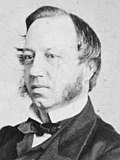Franchise and candidacy
Right to vote
The right to vote in elections to the Legislative Assembly was not universal. Only male British subjects (by birth or naturalisation), aged 21 and older, were eligible to vote, and only if they met a property qualification. For residents of cities and towns, the qualification was being the owner, tenant or occupant of real property assessed at three hundred dollars, or at an assessed yearly value of thirty dollars. For residents of townships and parishes, the requirements were either an assessment of two hundred dollars, or an assessed yearly value of twenty dollars. [1] [2]
Women were expressly prohibited from voting, "for any Electoral Division whatever". [1] [3]
Judges and many municipal and provincial officials were also barred from voting, particularly officials with duties relating to public revenue. Election officials were also barred from voting. [1] [4]
Qualification for the Legislative Assembly
Candidates for the Legislative Assembly had to meet a significant property qualification. A candidate had to own real property in the Province of Canada, worth at least £500 in British sterling, over and above any encumbrances on the property. [1] [5] [6]
Conduct of the election
The 1867 election was conducted under the election laws of the Province of Canada, which had been continued until altered by the Legislature of Quebec. [1] The electoral process of the Province of Canada in turn had been based on the traditional British electoral process, without a secret ballot. Instead, elections were public affairs, with each voter publicly stating the name of the candidate they voted for.
The election process began with writs of election issued by the Clerk of the Crown in Chancery, one for each constituency (also called a "riding"). The writ was directed to the Returning Officer for each constituency and required the Returning Officer to hold a public nomination of candidates, and if necessary a poll, on days to be chosen by the Returning Officer. [9]
On the nomination day, the Returning Officer held a public meeting "in the open air", at a central place in the constituency, and in a place where the public had access, such as in front of a town hall or church in the constituency. The Returning Officer addressed the assembled members of the public from a platform, called a "husting", and called for nominations. If only one person was nominated, the Returning Officer would close the nominations and declare that person elected. If more than one person was nominated, the Returning Officer would grant a poll, to be held at a future date, chosen by the Returning Officer. [10]
On polling day, polls would be held across the constituency. The polls were in held in the open air, or in buildings close to the highways, with free access by the public. It was prohibited to hold a poll in a "tavern or place of public entertainment". [11] The Returning Officer would appoint a Deputy Returning Officer for each polling place, normally the town clerk or other municipal official. Each Deputy Returning Officer would have a poll book. Qualified voters would appear before the Deputy Returning Officer and declare how they voted. The Deputy Returning Officer would record each voter's vote in the poll book. [12] At the close of the polls, the Deputy Returning Officers would deliver the poll books to the Returning Officer. The Returning Officer would then total all of the polls in public, at the place where the nominations had occurred, declare which candidate was elected, and issue a proclamation declaring the election closed. [13] The Returning Officer would then send a report of the election with the return of the writ to the Clerk of the Crown in Chancery, within fifteen days after the closing of the election. [14]
The elections for the sixty-five provincial constituencies were not all conducted on the same day. The writs of election for each constituency gave the Returning Officer the discretion to set the original nomination day, and the subsequent date for the polling, if more than one candidate were nominated. The 1867 election was spread across the months of August and September. [15]
This page is based on this
Wikipedia article Text is available under the
CC BY-SA 4.0 license; additional terms may apply.
Images, videos and audio are available under their respective licenses.


